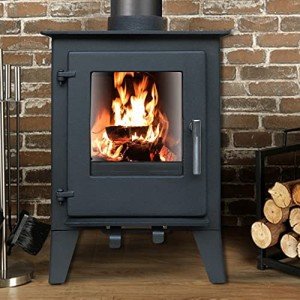10 Wrong Answers For Common Multi Stove Questions: Do You Know The Correct Answers?
Wood Burning and Multi-Fuel Stoves: A Comprehensive Guide
In recent years, wood-burning and multi-fuel stoves have gained appeal as a sustainable and efficient method to heat homes. They use an appealing option to conventional gas or electric heating unit, supplying not only heat but likewise a stunning aesthetic. This article checks out the benefits, types, setup considerations, and upkeep of wood-burning and multi-fuel stoves to help consumers make notified choices.
What Are Wood Burning and Multi-Fuel Stoves?
Wood-burning stoves are designed entirely to burn wood as fuel, while multi-fuel stoves can burn a variety of fuels including wood, coal, and peat, offering higher flexibility. These stoves differ in design, effectiveness, and usage, catering to different needs and choices.
Advantages of Wood-Burning and Multi-Fuel Stoves
Eco-Friendly:.Wood is thought about a renewable resource, especially when sourced sustainably. Burning wood launches minimal carbon compared to nonrenewable fuel sources, effectively decreasing one's carbon footprint.
Cost-efficient:.In numerous regions, wood is cheaper than gas or electrical energy. Even with Multi Fuel Stove Modern and setup expenses, wood-burning and multi-fuel stoves can lead to considerable savings on heating expenses.
Aesthetic Appeal:.The visual appeal of a genuine fire includes heat and beauty to a home. Wood-burning and multi-fuel stoves can function as a focal point in any space.
Energy Efficiency:.Many modern stoves are created to burn fuel more effectively, ensuring that more heat is produced from less fuel.
Independence:.Stoves offer an alternative heat source, especially in case of power failures, boosting energy self-reliance.
Kinds Of Wood Burning and Multi-Fuel Stoves
Understanding the different choices offered can help consumers choose the best stove for their requirements.
1. Standard Wood Burning Stoves
- Material: Generally made from cast iron or steel.
- Performance: Often consist of a classic style that enhances traditional décor designs.
- Effectiveness: Low to moderate performance levels (60-80%).
2. Modern Wood Burning Stoves
- Product: Often made with innovative products and ingenious designs.
- Functionality: Feature double combustion for higher performance and lowered emissions.
- Efficiency: High efficiency levels (as much as 90%).
3. Multi-Fuel Stoves
- Flexibility: Can burn wood, coal, and peat.
- Design: Generally designed for simple fuel changing.
- Effectiveness: Efficiency varies with fuel type however generally suitable for diverse heating needs.
4. Pellet Stoves
- Fuel Type: Burn compressed wood pellets.
- Functionality: Automated feed system for easier usage.
- Performance: Very high efficiency levels (up to 95%).
Installation Considerations
Before buying a wood-burning or multi-fuel stove, certain factors need to be considered concerning installation:
Location:.Choose where the stove will be set up. Consider proximity to fuel storage and smoke venting arrangements.
Chimney System:.Existing chimneys might not always appropriate. A new flue system may be required to fulfill guidelines and performance requirements.
Regional Regulations:.Compliance with regional building codes, safety guidelines, and ecological requirements is vital. Speak with regional authorities or a professional installer.
Stove Size:.Choosing the suitable size is vital. An extra-large stove can cause getting too hot, while an undersized stove might not provide enough heat.
Maintenance Tips for Wood Burning and Multi-Fuel Stoves
Correct maintenance of stoves makes sure safety and longevity. Here are important upkeep practices to adopt:
- Regular Cleaning: Clean the flue and chimney at least once a year or more regularly if utilized frequently.
- Look for Cracks: Inspect the stove and chimney for any fractures or damage that can result in dangerous emissions.
- Usage Seasoned Wood: Always utilize dry, experienced wood to reduce creosote buildup and make the most of efficiency.
- Inspect Gaskets: Ensure door and window gaskets form a tight seal for optimal efficiency.
FAQs About Wood Burning and Multi-Fuel Stoves
1. Are wood-burning stoves safe?Yes, when
utilized and preserved correctly, wood-burning stoves are safe. Constantly follow maker guidelines and local policies.
**2. Can I utilize my wood stove for cooking?Many wood-burning stoves can be used for cooking; however, check the producer's recommendations for safe cooking. 3. How do I pick between a wood-burning and
multi-fuel stove?Selection depends upon your fuel accessibility, choices for heating, and upkeep factors to consider. Multi-fuel alternatives supply versatility. 4. What kind of wood must I use?Hardwoods such as oak, maple, and hickory are ideal for burning due to their greater energy material compared to softwoods. 5. How do I understand
if my stove is efficient?Look for certification labels from acknowledged companies and consider the effectiveness rankings provided by manufacturers.
Wood-burning and multi-fuel stoves present an effective,
environment-friendly alternative to standard heating systems, offering warmth while lessening ecological impact. By picking the ideal
kind of stove, ensuring correct setup, and devoting to routine maintenance, property owners can enjoy the various benefits these heating unit provide while adding to sustainability. Whether utilized for a cozy night or as a primary heating source, these stoves improve comfort and ambiance in any home. Table: Comparison of Stove Types Stove Type Fuel Options Efficiency (%) Maintenance Level Traditional Wood Wood 60- 80 Moderate Modern Wood Wood As much as 90 Low to Moderate Multi-Fuel Wood, Coal, Peat Differs Moderate Pellet Wood Pellets Up to 95 Low
By considering these elements and guidelines
, consumers can
make informed choices about incorporating wood-burning or
multi-fuel stoves
into
their homes.  **
**